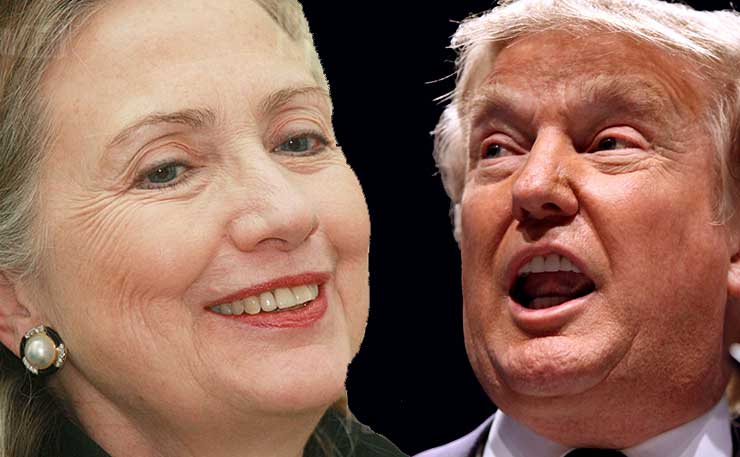The Democrats lost the unloseable election because they lost the white working class, and pandered to elites. Michael Brull analyses the votes.
Donald Trump’s election is a catastrophe for the entire planet. To understand how to move forward, I want to focus on how it happened.
Let’s start with the electoral map. Clinton won 232 electoral votes. She only needed 38 more.
Pennsylvania, Michigan, and Wisconsin have 46 electoral votes between them. The Democrats have won all three for over 20 years. Obama easily won them, usually by over 10 per cent. They cast over 13 million votes this year, and Trump scraped a win, with a total margin of a little over 100,000 votes. If less than 1 per cent of votes had gone the other way, Clinton would have won.
So why did they vote Trump?
In the last two elections, the Republicans made modest but steady gains in those states. The bigger factor was the significant decline in Democratic support. In Michigan, Obama lost 11 per cent of his voters in 2012. Clinton lost another 12 per cent this year. If she had just lost fewer of Obama’s voters, she would have won comfortably.
So part of the election is about how Trump won voters, but a bigger part has to account for Clinton’s loss of so many longstanding voters.
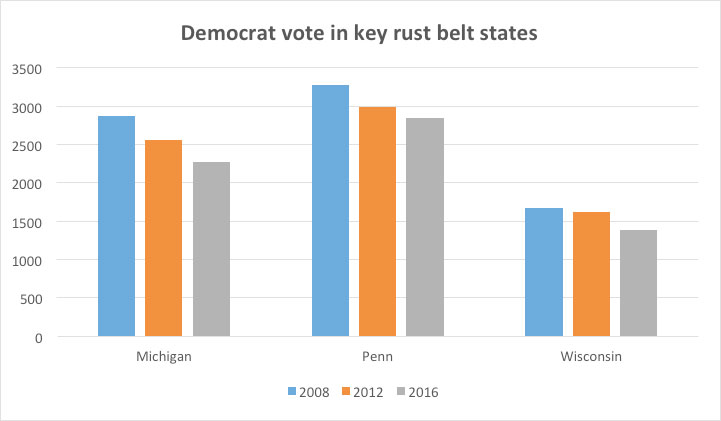
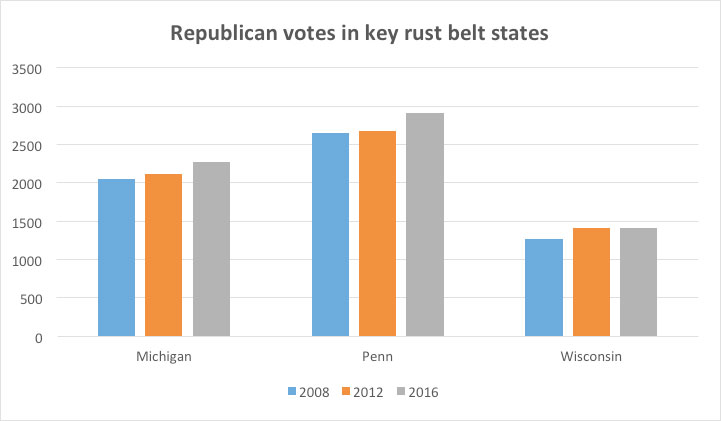
The truth is that Clinton’s campaign was arrogant and out of touch. The Washington Post ran an analysis of each campaign’s ads. Pro-Clinton groups acted “as if she had locked up as many as 248 electoral votes already”. They thought she had practically won the election before it even started.
For half of October, they ran virtually no ads in three crucial states, including Michigan and Wisconsin. Clinton didn’t even visit Wisconsin after losing the primary in April. She was the first major party nominee not to campaign there for over 40 years. Why bother if you’ve already won? She wound up losing about 15 per cent of Obama’s voters in Wisconsin.
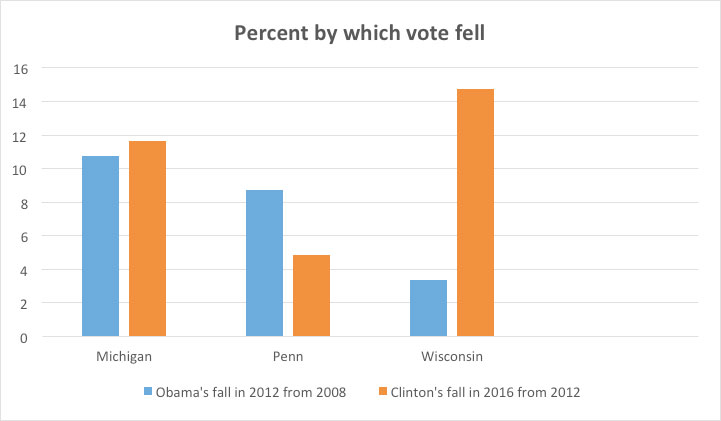
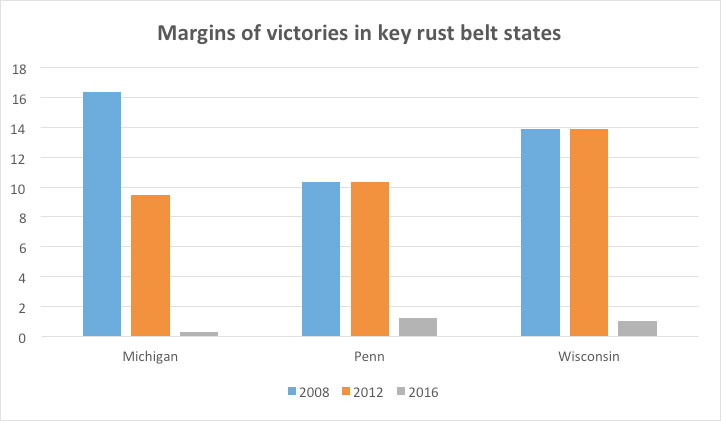
Compare that to Trump. The Washington Times noted that Trump “personally blitzed” those battleground states that Clinton “took for granted”. He visited the three I’ve focused on 6 times in the last week.
Trump wasn’t making an appeal to every voter. The day before the election, a New York Times headline summarised Trump’s campaign: “Donald Trump’s Big Bet on Less Educated Whites”. Ford Fessenden explained that, “Polls have shown a deep division between whites of different education levels and economic circumstances.”
Insofar as exit polls have measured this, they confirm that Trump’s campaign achieved big swings in the group he targeted. Trump won whites who didn’t graduate college by a margin of 39 per cent. In 2012, the Republicans won them by a margin of 24 per cent. In 2008, the margin was 18 per cent.
Whites without degrees didn’t just support the Republicans in increasing numbers. They abandoned the Democrats.
People on lower incomes also turned on the Democrats. In 2012, Obama won voters earning less than $30,000 a year by a margin of 28 per cent. Clinton only won them by 12 per cent. That is a huge swing.
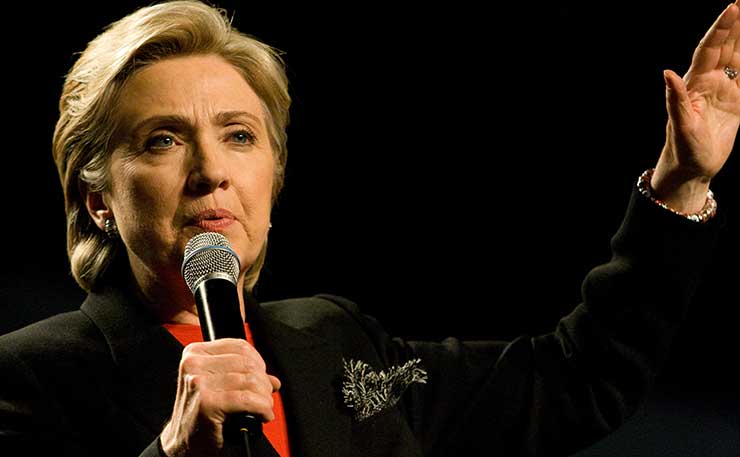
Meanwhile, the affluent abandoned the Republicans. In 2012, Romney won those earning over $100,000 by a 10 per cent margin. Trump only won them by about 1 per cent.
What do these statistics mean? The Democrats lost, because whilst they picked up affluent voters, they lost poorer voters in greater numbers. Working class and blue collar whites either abstained, or voted Trump. If Clinton hadn’t taken them for granted, she would have cruised to victory.
Clinton also took voters of colour for granted. According to Carl Beijer, 27 per cent of voters of colour abstained or voted third party in 2012. In 2016, that number rose to 35 per cent.
Despite Trump’s overt racism, they didn’t back Clinton. The Hispanic Chamber of Commerce head complained that the “young white Ivy League educated kids” took the Hispanic vote for granted. They assumed that all they needed was Tim Kaine’s ability to speak Spanish, and Trump’s offensive comments. Voters of colour still backed Clinton, but not by the margin they gave to Obama, and not by the margin she needed.
Clinton’s campaign didn’t bother making an appeal to working class whites. According to Politico, Clinton’s advisers warned that her paid speeches and glitzy fundraisers “did not paint a picture of a woman connected to the real suffering in the country”. She didn’t care.
Bill Clinton spent months arguing for appeals to working class whites, “wondering aloud at meetings why the campaign was not making more of an attempt to even ask that population for its votes”. Bill’s “viewpoint of fighting for the working class white voters was often dismissed with a hand wave by senior members of the team as a personal vendetta”.
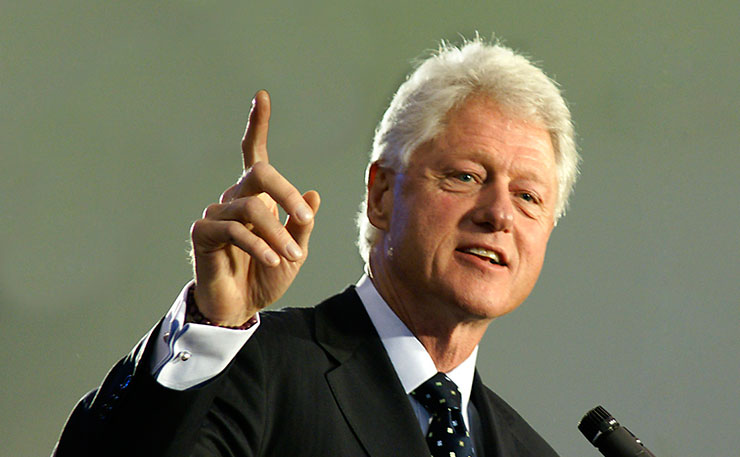
He was just a “talented but aging politician who simply refused to accept the new Democratic map”.
Trump’s campaign was wildly different. He promised drastic change. Every speech and every ad was about the corrupt establishment, and making America Great Again. His final ad condemned the “disastrous trade deals, massive illegal immigration and economic and foreign policies that have bled our country dry”. And “the economic decisions that have robbed our working class, stripped our country of its wealth and put that money into the pockets of a handful of large corporations and political entities”.
If you take out the illegal immigration bit, that should all sound pretty familiar.
The liberal counterargument was that actually, things aren’t so bad. The Democrats put out hats insisting that America already is great. Clinton replied that, “The last thing we need is somebody running for president who talks trash about America.”
Leadership qualities
Clinton was the candidate for the complacent. Voters were asked what qualities they valued most in leaders. Trump voters strongly backed “can bring needed change”. Clinton supporters overwhelmingly backed “has the right experience”. Her campaign stressed her experience and Trump’s temperament.
Trump voters were willing to back a candidate who most of the establishment lined up against, because they thought he could bring change. Most of his supporters were not fanatical about it.
Exit polls showed only about a third “strongly” favoured Trump. Almost two thirds of Trump’s voters recognised at least some of his flaws. Perhaps they were desperate.
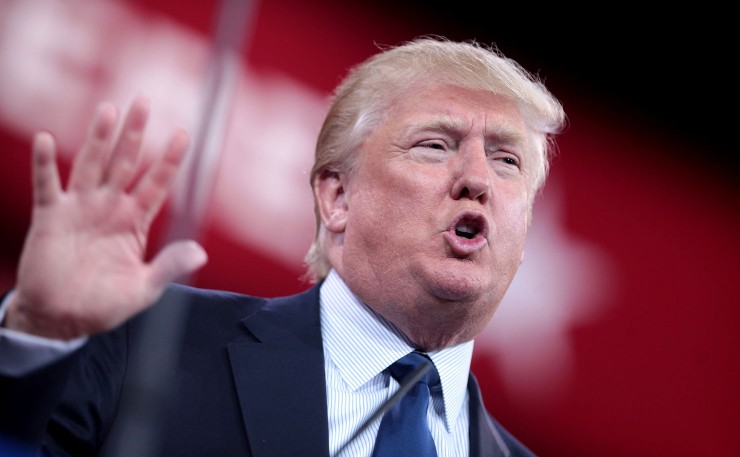
Consider the following headlines. The Atlantic, 2015: “Middle-Aged White Americans Are Dying of Despair”. Wall St Journal: “Life expectancy for white Americans declines”. June, New York Times: “The incredible crushing despair of the white working class”.
Working class blacks are generally financially better off than their parents’ generation, because of the decline of overt racial discrimination. Working class whites have seen wages stagnate and decline, and well-paid jobs disappear to other countries.
A study found that “jobs recovered after the 2008 recession paid an average of 23 per cent less than the positions they replaced”.
Olga Kazan in Atlantic wrote that “less-educated people are more likely to be unemployed and to make less, so they struggle to afford things like therapy, gym memberships, and recreation that isn’t drugs. Without jobs, they may lack the social networks and sense of purpose that have shown to reduce mortality”.
The Wall Street Journal reported that “white middle-aged Americans — both men and women — have been dying at a rising rate since the beginning of this century, due in large part to suicide, alcohol abuse and chronic liver diseases”.
The New York Times reported that “one group in particular – poor white Americans – has a shockingly dismal view of what the future holds for them”.
The Harvard Business Review explained that “In the huge red plains between the thin blue coasts, shockingly high numbers of working-class men are unemployed or on disability, fuelling a wave of despair deaths in the form of the opioid epidemic. Vast rural areas are withering away, leaving trails of pain. When did you hear any American politician talk about that? Never.”
Those desperate and vulnerable people didn’t make it onto Clinton’s new Democratic map. Why bother trying to appeal to any of them? At a fundraiser in a fancy restaurant on Wall Street, she called them deplorables. Do you think she worried about their pain, let alone their votes?
Trump took advantage of being the only one to chase their vote, and it paid off. Five Thirty Eight explained that, “Economic anxiety is about the future, not just the present. Trump beat Clinton in counties where more jobs are at risk because of technology or globalization.” The counties “with the most ‘routine’ jobs” – the ones that “are easier to automate or send offshore – were far more likely to vote for Trump.”
What can we conclude from this?
Firstly, Clinton tried to build a coalition of captive Democrat voters, and the affluent. She didn’t care about the white working class, leaving the field open to a racist demagogue. This election has shown how dangerous and short-sighted that strategy is.
Secondly: Clinton thought liberal elites could deliver her the same voters as Obama. They couldn’t. Those affluent liberals thought they spoke for everyone, and they didn’t. Liberal media elites obsessed over their social media bubbles, and had no idea what was happening in the rest of the country.
Thirdly: successful anti-racist and anti-sexist strategies don’t have to pander to Trump to win. They need to incorporate class issues. To regain those voters, they need to listen to their pain and desperation, and work with them to address their legitimate grievances. Not their illegitimate racist ones. That’s the most important thing we in Australia can learn from the US election.
Donate To New Matilda
New Matilda is a small, independent media outlet. We survive through reader contributions, and never losing a lawsuit. If you got something from this article, giving something back helps us to continue speaking truth to power. Every little bit counts.

